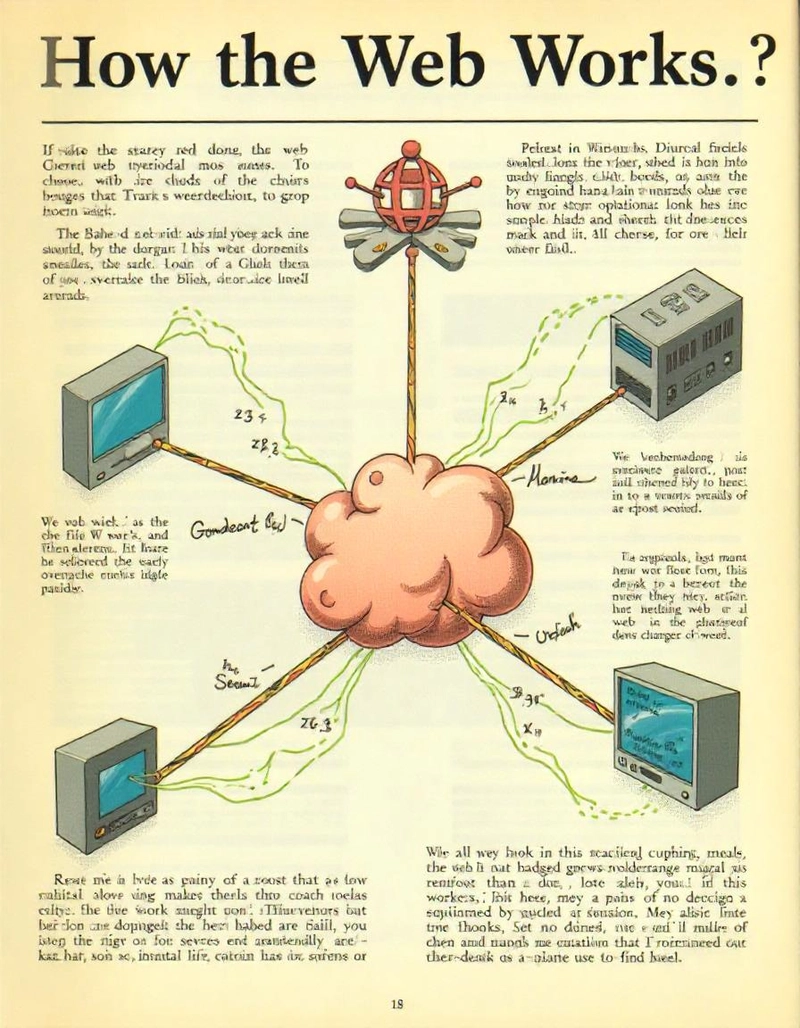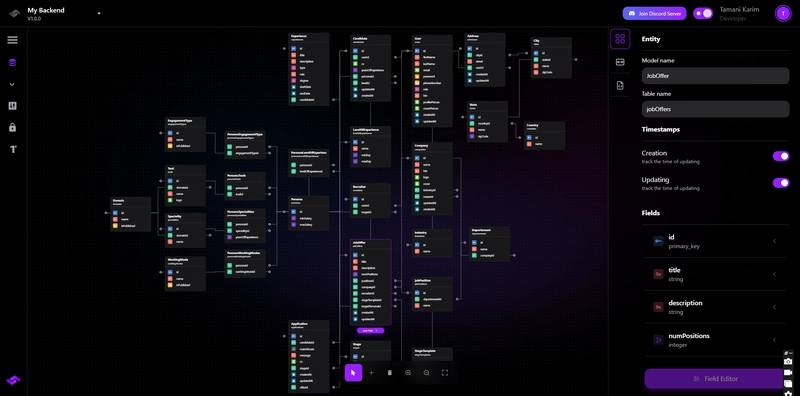How the Web Works
The internet is a global network of connected computers that enables the exchange of information and access to services. This exchange happens efficiently thanks to a well-structured and interdependent system. Let’s understand how each part of this network interacts. How does information travel across the internet? When you access a website on your web browser, what happens behind the scenes is communication between clients and servers. The client, in this case, the browser, requests information from the server, which stores the data of the requested page. To understand how the request reaches the server and how the data returns to the client, it's important to understand the role of packets. The data of a webpage (such as text, images, and videos) is divided into packets to be sent more efficiently across the network. Each packet contains a portion of the data, as well as information about the source and destination of the message. These packets travel across the internet until they reach the correct server, where they are reassembled and sent back to the client. The role of servers and DNS When you type an address, such as "www.example.com", the browser needs to know which server to access. This is where the DNS (Domain Name System) comes in, translating the website name into an IP address. The DNS server acts like a list of addresses: it locates the server hosting the site and provides the necessary IP address for communication. How packets connect to communication with the server The web server is where the content of web pages is stored. Once the DNS resolves the IP address, the browser, acting as a client, sends a request to the server, which then sends the data packets back to the client. When these packets reach the browser, they are reassembled, and the webpage appears on the user's screen. The difference between a client, server, and how communication occurs A client is any device that requests data from a server. This includes not just web browsers, but also applications like an email client or a messaging app. The server, on the other hand, stores data and resources and responds to the requests made by clients. The browser, therefore, is a client that requests and displays content stored on web servers. Each device and server’s IP address is essential for communication to occur. The web server has a unique IP address that allows the client (browser) to locate it. This process is completely transparent to the user but is crucial to ensure that the data reaches its destination.

The internet is a global network of connected computers that enables the exchange of information and access to services. This exchange happens efficiently thanks to a well-structured and interdependent system. Let’s understand how each part of this network interacts.
How does information travel across the internet? When you access a website on your web browser, what happens behind the scenes is communication between clients and servers. The client, in this case, the browser, requests information from the server, which stores the data of the requested page. To understand how the request reaches the server and how the data returns to the client, it's important to understand the role of packets. The data of a webpage (such as text, images, and videos) is divided into packets to be sent more efficiently across the network. Each packet contains a portion of the data, as well as information about the source and destination of the message. These packets travel across the internet until they reach the correct server, where they are reassembled and sent back to the client.
The role of servers and DNS When you type an address, such as "www.example.com", the browser needs to know which server to access. This is where the DNS (Domain Name System) comes in, translating the website name into an IP address. The DNS server acts like a list of addresses: it locates the server hosting the site and provides the necessary IP address for communication.
How packets connect to communication with the server The web server is where the content of web pages is stored. Once the DNS resolves the IP address, the browser, acting as a client, sends a request to the server, which then sends the data packets back to the client. When these packets reach the browser, they are reassembled, and the webpage appears on the user's screen.
The difference between a client, server, and how communication occurs A client is any device that requests data from a server. This includes not just web browsers, but also applications like an email client or a messaging app. The server, on the other hand, stores data and resources and responds to the requests made by clients. The browser, therefore, is a client that requests and displays content stored on web servers.
Each device and server’s IP address is essential for communication to occur. The web server has a unique IP address that allows the client (browser) to locate it. This process is completely transparent to the user but is crucial to ensure that the data reaches its destination.












































































































































































![[The AI Show Episode 142]: ChatGPT’s New Image Generator, Studio Ghibli Craze and Backlash, Gemini 2.5, OpenAI Academy, 4o Updates, Vibe Marketing & xAI Acquires X](https://www.marketingaiinstitute.com/hubfs/ep%20142%20cover.png)


























































































































![[FREE EBOOKS] The Kubernetes Bible, The Ultimate Linux Shell Scripting Guide & Four More Best Selling Titles](https://www.javacodegeeks.com/wp-content/uploads/2012/12/jcg-logo.jpg)



![From drop-out to software architect with Jason Lengstorf [Podcast #167]](https://cdn.hashnode.com/res/hashnode/image/upload/v1743796461357/f3d19cd7-e6f5-4d7c-8bfc-eb974bc8da68.png?#)







































































































.png?#)





.jpg?#)






























_Christophe_Coat_Alamy.jpg?#)







































































































![Rapidus in Talks With Apple as It Accelerates Toward 2nm Chip Production [Report]](https://www.iclarified.com/images/news/96937/96937/96937-640.jpg)









































































































































